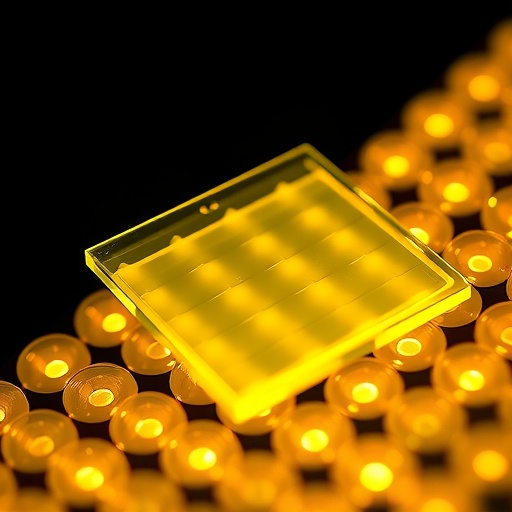Researchers in the field of renewable energy have recently made a significant breakthrough in optimizing lead-free perovskite solar cells using machine learning techniques. With the ever-growing urgency to transition from fossil fuels to sustainable energy sources, solar technology remains at the forefront of alternative energy solutions. Perovskite solar cells, known for their high efficiency and low production costs, are gaining attention. However, the challenge has been their reliance on toxic materials, prompting a shift toward lead-free alternatives. This research presents the potential of machine learning in predicting power conversion efficiency (PCE), making strides toward more effective and environmentally friendly solar solutions.
The team of researchers, including Islam, Kundra, and Thakur, adopted a thorough approach to machine learning to optimize the performance of lead-free perovskite solar cells. Their focus was on not just achieving efficiency but also ensuring that the materials used comply with environmental standards. Traditional methods of material discovery and optimization can be both time-consuming and resource-intensive, leading to a bottleneck in innovation. By leveraging the power of algorithms and data analysis, the researchers aimed to expedite the processes involved in developing new solar cell materials, thus accelerating the transition to green technology.
By utilizing historical data on solar cell performance, the researchers employed machine learning models to derive correlations between various material compositions and their resulting efficiencies. This predictive modeling can reveal the optimal combinations of elements that can lead to the highest levels of performance in lead-free perovskite solar cells. The machine learning approach not only enhances understanding but also allows for automation in material selection, minimizing the trial-and-error methodology commonly used in experimental research.
In their findings, the researchers demonstrated that machine learning could accurately predict the PCE of various lead-free perovskite compositions. They trained their models on both synthetic data and experimental results, allowing the algorithms to learn how specific variables affected efficiency outcomes. This dual approach promotes a deeper understanding of the underlying principles governing solar cell performance while simultaneously expanding the data landscape from which these insights are derived.
As the research progressed, the team identified key factors influencing the efficiency of lead-free perovskite solar cells. These factors included the choice of organic materials, the crystallization process, and the interface engineering, all of which play pivotal roles in determining the performance metrics of solar cells. Through rigorous data analysis, the researchers successfully pinpointed the material attributes that resulted in enhanced stability and efficiency, crucial elements for commercial viability.
One notable aspect of the research is the focus on creating environmentally benign alternatives to lead-based perovskites. Traditional perovskite solar cells often employ lead, a material that presents significant toxicity risks during manufacturing and disposal processes. By identifying lead-free compositions that exhibit similar or improved performance metrics, this research paves the way for the development of solar technologies that align with sustainability goals while maintaining economic feasibility.
The implications of this research extend beyond just scientific advancement; they also hold the potential to influence policy and manufacturing practices within the renewable energy sector. By showcasing the value of machine learning in accelerating materials discovery, the study encourages further investment in digital tools and data-driven approaches within the solar industry. As industries seek to improve their environmental footprints, the integration of innovative technologies such as artificial intelligence and machine learning can lead to more efficient and responsible production practices.
Furthermore, the advancement of lead-free perovskite solar cells could democratize access to solar energy solutions. With lower production costs and reliance on non-toxic materials, these solar cells may become accessible to a broader range of consumers and businesses, enhancing energy independence in various parts of the world. The democratization of solar technology is a critical step toward achieving global energy equity and combating climate change.
The ongoing research will not only focus on enhancing efficiency but also on ensuring the scalability of the technologies developed. For a technology to make an actual impact, it must be adaptable to large-scale production without sacrificing quality or performance. Therefore, the researchers aim to work closely with manufacturing partners to facilitate the transition from laboratory successes to market-ready products.
Looking to the future, the researchers envision a world where machine learning is standard practice in the materials development sector, particularly within renewable energy domains. The ability to predict and optimize material performance represents a paradigm shift away from traditional, resource-intensive methodologies. This change not only reduces costs and timeframes associated with development but also enhances the ability to respond promptly to the evolving needs of the energy sector.
In summary, the study led by Islam, Kundra, and Thakur signifies a major advancement in the optimization of lead-free perovskite solar cells through machine learning. Their approach heralds a new era in solar technology research, emphasizing efficiency, sustainability, and the potential for broad accessibility. As the world collectively works toward a greener future, research of this caliber will play a critical role in realizing the goals of reducing carbon emissions and promoting renewable energy solutions.
The combination of machine learning with material science presents a powerful opportunity to accelerate advancements in the photovoltaic landscape. The findings underscore the importance of interdisciplinary collaboration as researchers, engineers, and data scientists come together to address one of the most pressing challenges of our time—transitioning to a sustainable energy future. The work represents a hopeful step toward a world where clean, renewable energy is not just a dream but a tangible reality for everyone.
Subject of Research: Lead-free Perovskite Solar Cells Optimization using Machine Learning
Article Title: Machine learning-guided optimization of lead-free perovskite solar cells: predicting PCE with high accuracy.
Article References:
Islam, S., Kundra, N., Thakur, R. et al. Machine learning-guided optimization of lead-free perovskite solar cells: predicting PCE with high accuracy.
Environ Sci Pollut Res (2025). https://doi.org/10.1007/s11356-025-37011-0
Image Credits: AI Generated
DOI:
Keywords: Machine Learning, Lead-free Perovskite Solar Cells, Power Conversion Efficiency, Renewable Energy, Data Analysis, Material Science.




